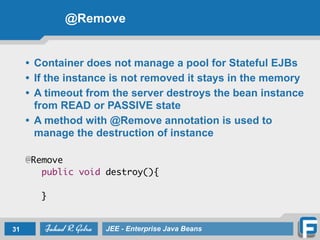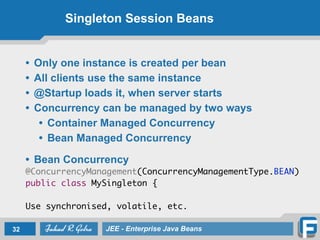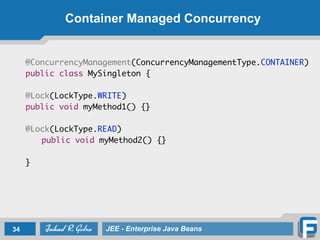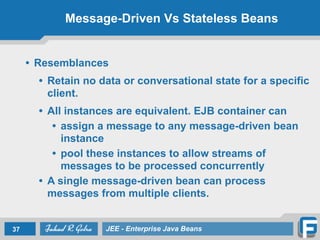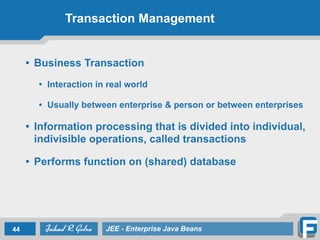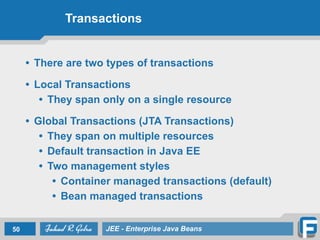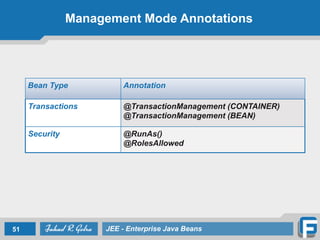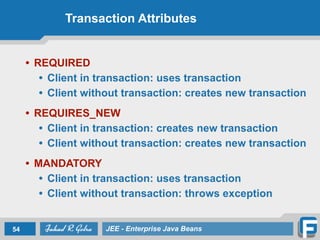The document provides a comprehensive overview of Enterprise JavaBeans (EJB) 3.x, detailing types such as stateless, stateful, and singleton session beans, as well as message-driven beans. It covers the advantages of using EJBs, including scalability, transaction management, remote access, and broad vendor support, along with lifecycle management and access methods like dependency injection and JNDI lookup. Additionally, it highlights transaction management principles, including ACID properties and transaction types, emphasizing the importance of reliable transaction processing in enterprise applications.
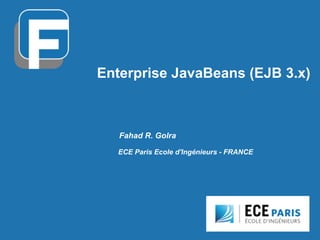






![Types of EJB
8
EJB
Message-Driven
Session
Entity
(pruned)
[JPA]
StatelessStateful
Container
Managed
Persistence
Bean
Managed
Persistence
Singleton
Bean Type Annotation
Session Bean Performs a task for a client; optionally, may implement
a web service
Message-
driven Bean
Acts as a listener for a particular messaging type,
such as the Java Message Service API](https://image.slidesharecdn.com/lecture8-ejb-141215045554-conversion-gate01/85/Lecture-8-Enterprise-Java-Beans-EJB-8-320.jpg)




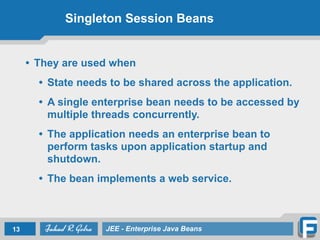



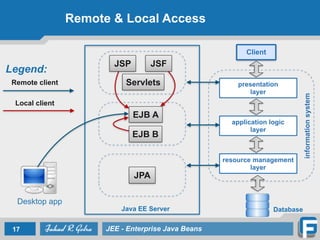





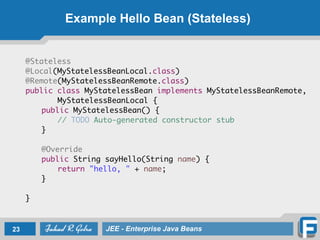



![Portable JNDI Syntax
• java:global
• JNDI namespace for remote EJBs
java:global[/application name]/module name /enterprise bean name[/
interface name ]
• java:module
• JNDI namespace for local EJBs within the same module.
java:module/enterprise bean name/[interface name]
• java:app
• JNDI namespace is used to look up local EJBs packaged within the
same application.
java:app[/module name]/enterprise bean name [/interface name]
27 JEE - Enterprise Java Beans](https://image.slidesharecdn.com/lecture8-ejb-141215045554-conversion-gate01/85/Lecture-8-Enterprise-Java-Beans-EJB-27-320.jpg)



